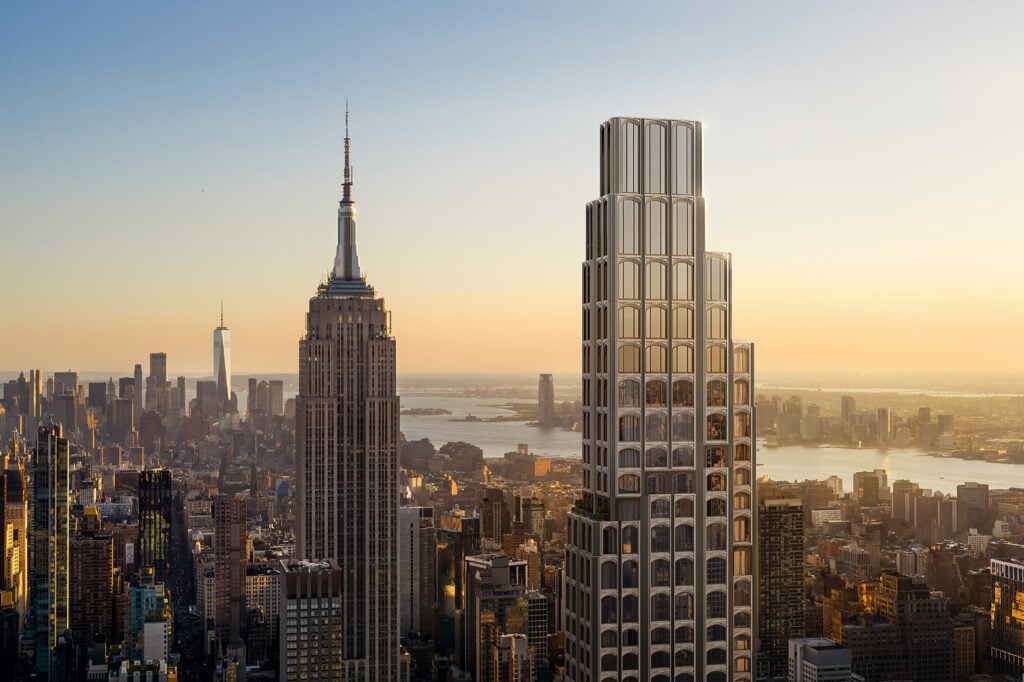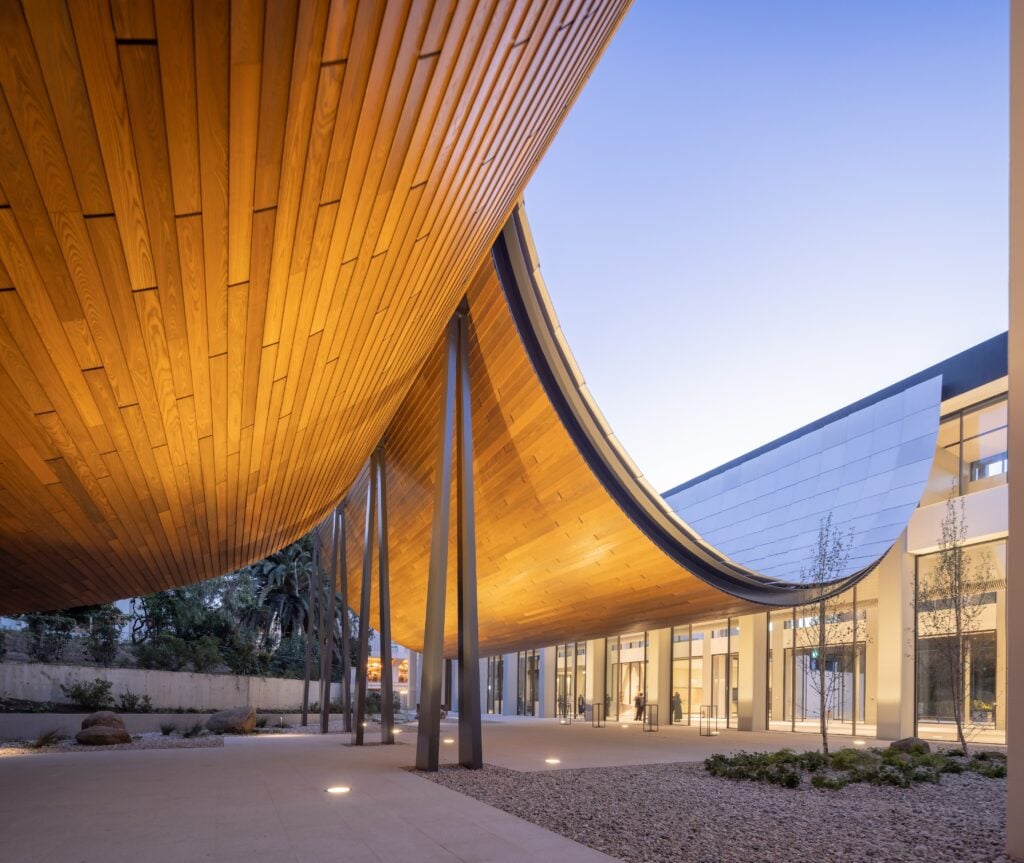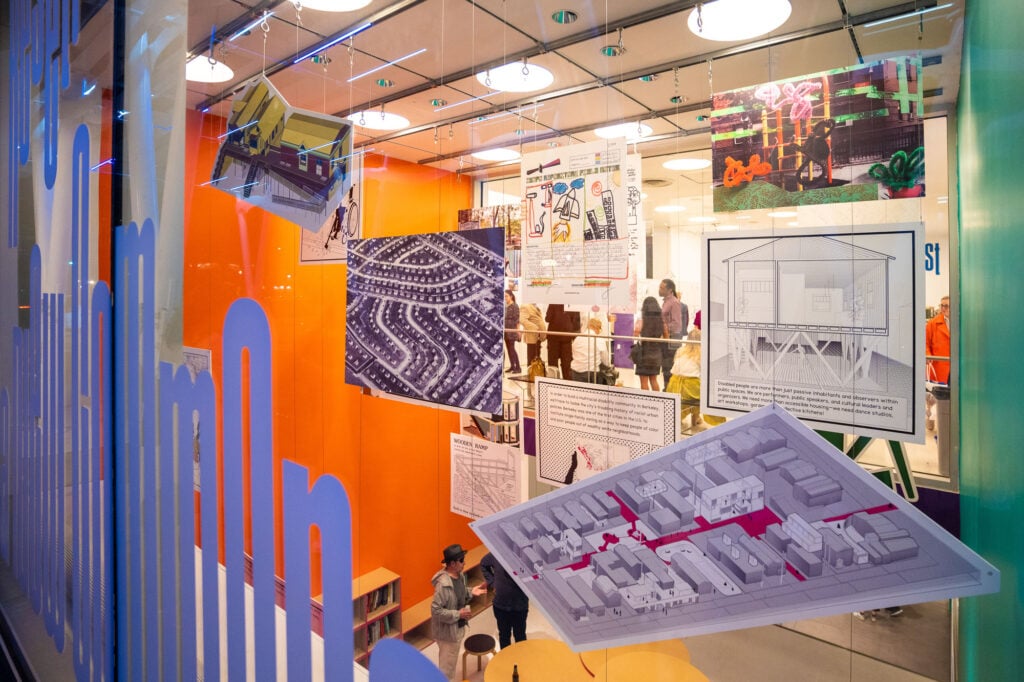
April 27, 2022
Manhattan’s Center for Architecture Imagines the Future of Universal Design
These commons are not on Mars, or in a cloud of mist, or in hanging gardens on the seventieth story––they are achievable interventions.
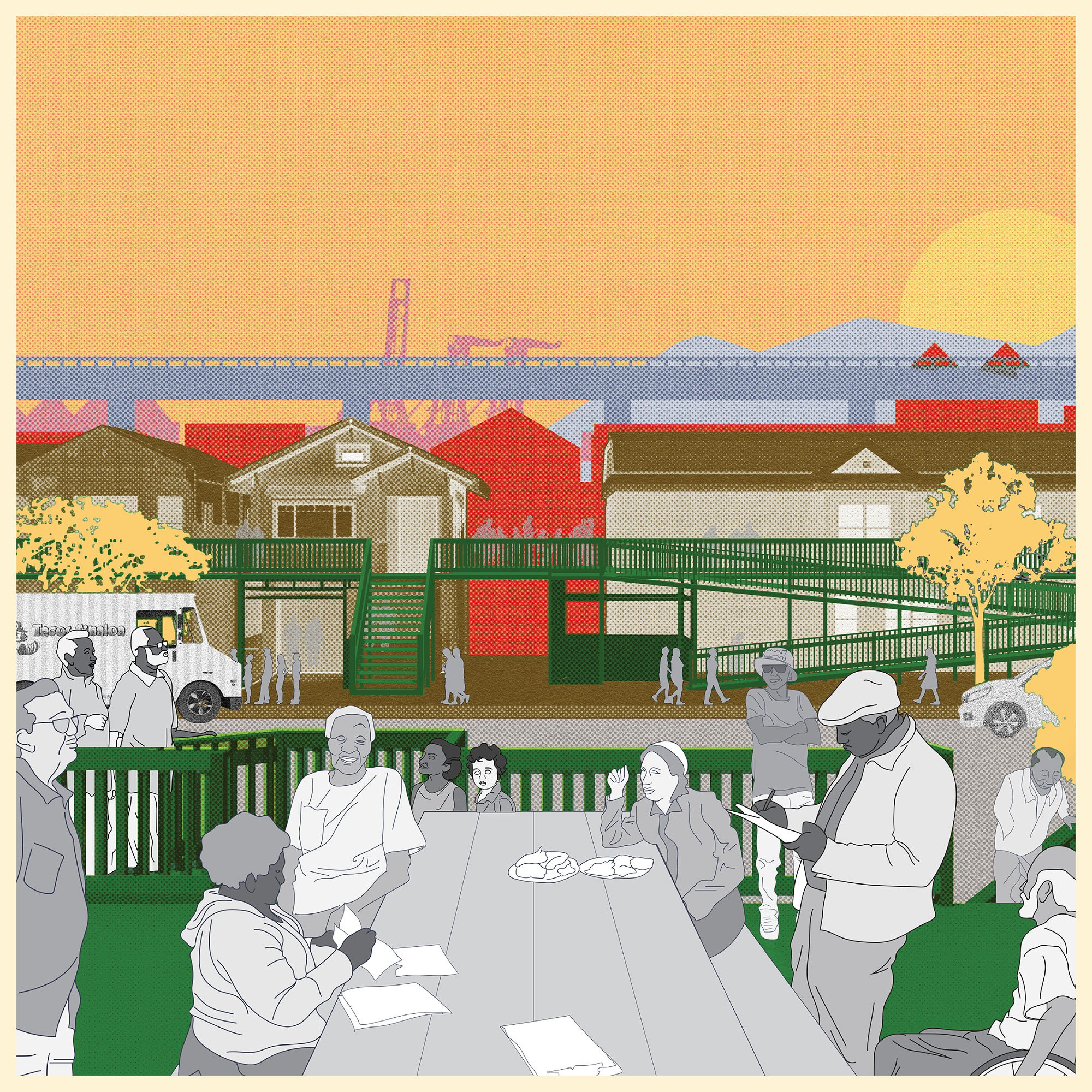
Within the exhibition, four teams, selected by a jury and each composed of up to eight collaborators from a variety of backgrounds present sections that focus on different facets of this civic conundrum with examples including aging in West Oakland, disability in Berkeley, the legacy of poverty, disinvestment, and racism in a Cincinnati neighborhood, and the bleak hardscape of several Harlem NYCHA projects. The solutions reliably showcase actual residents and draw upon the existing work of community groups.
Aging Against the Machine, focused on West Oakland, questions the fact that it’s not merely our suburbs but also our cities that are unsuitable for the aging. Wall captions read, “Aging is not a problem to be solved. The problem is the range of barriers—physical, social, financial, and cultural—that make it difficult to grow older with dignity and in community.” Their tell the stories of actual residents including Damon, an avid biker constrained by the city’s streetscape, and Regina, whose children have to carry her down the stairs of her home.
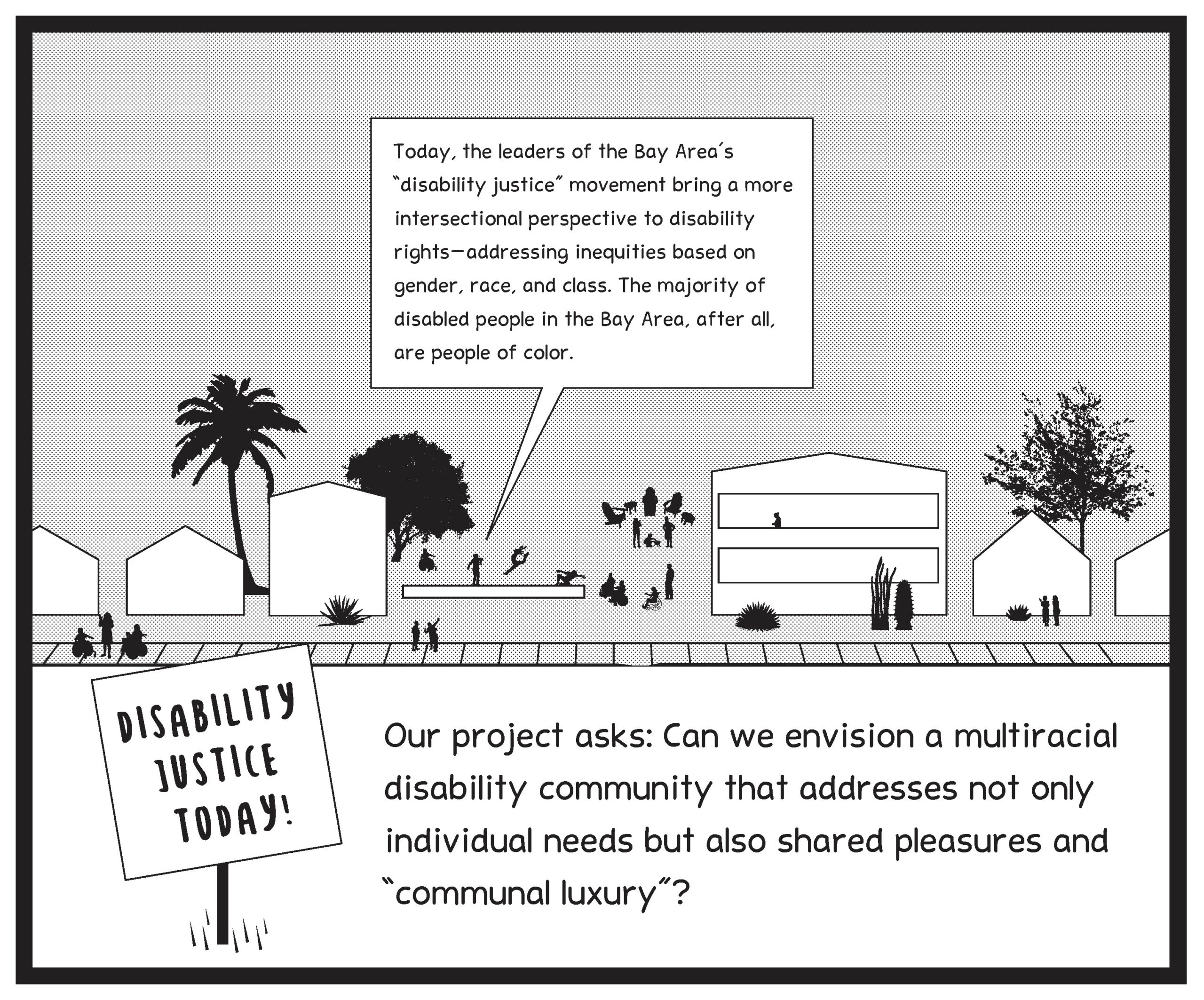
The next section, Block Party, draws upon Berkeley’s history: with captions explaining “in the 1960s and 1970s, disabled people in Berkeley fought for deinstitutionalization, housing autonomy, and improved access to infrastructure and public space.” The section also draws on the contributions of disabled and non-disabled architects and seeks to address a range of obstacles to a variety of disabilities; mobility issues are obviously often the most pressing but other disabilities inhibit the use of numerous urban settings. It starts with the exhibition design itself, which includes audio elements and a tactile model that was initially devised to enable collaboration with a blind team member.
The exhibition takes rightful aim at Berekely’s history of single-family zoning within its text, “as a way to keep people of color and poor people out of wealthy white neighborhoods.” They encourage solutions one might expect and should want: ADUs, affordable housing construction, and more. A large model of Meander: A New Accessible Pathway imagines new easements created across interior block lines which could furnish space for additional housing and provide new pathways for the disabled. The incentive imagined in accompanying captions: “In exchange for permission to add inaccessible square footage to their homes, owners would have to grant a portion of their land for disabled access and common use.” A “honeycomb” building within the model looks to provide better lodging for not just one but , to “provide visual and aural connection between apartments and courts” for the sake of the deaf, blind, and neurodiverse communities.

Decolonizing Suburbia, focuses on the Avondale neighborhood of Cincinnati––a neighborhood that has been buffeted by many ill winds including interstate construction and depopulation. One-third of the largely Black population lives in poverty and numerous lots and structures are vacant.
The plan seeks to restore existing buildings, add new ones, enhance green space, and improve retail offerings. A modular post and lintel framing system is proposed for economical dwelling additions. It responds quite specifically to plot sizes, plotting a long multi-unit structure along the length of the site and retaining the remainder for outdoor space. Its other infill concepts are granular and strong.
The last portion of the exhibit, RePLay, focuses on the Thomas Jefferson Houses, James Weldon Johnson Houses, and Robert F. Wagner NYCHA Houses in Harlem, engaging a voice often absent from the design table, young residents themselves. Their proposals are affecting not because they are utopian but because they are highly reasonable––an edible schoolyard, a yellow brick road, murals, new garden space–but generally absent from barren public spaces, dramatized by photos projecting these visions of life onto drab existing surfaces.
These youths, the exhibit text explains, “reclaim public spaces for the communal joy that is fundamental to well-being, health, and placemaking.” Now doesn’t that sound good?
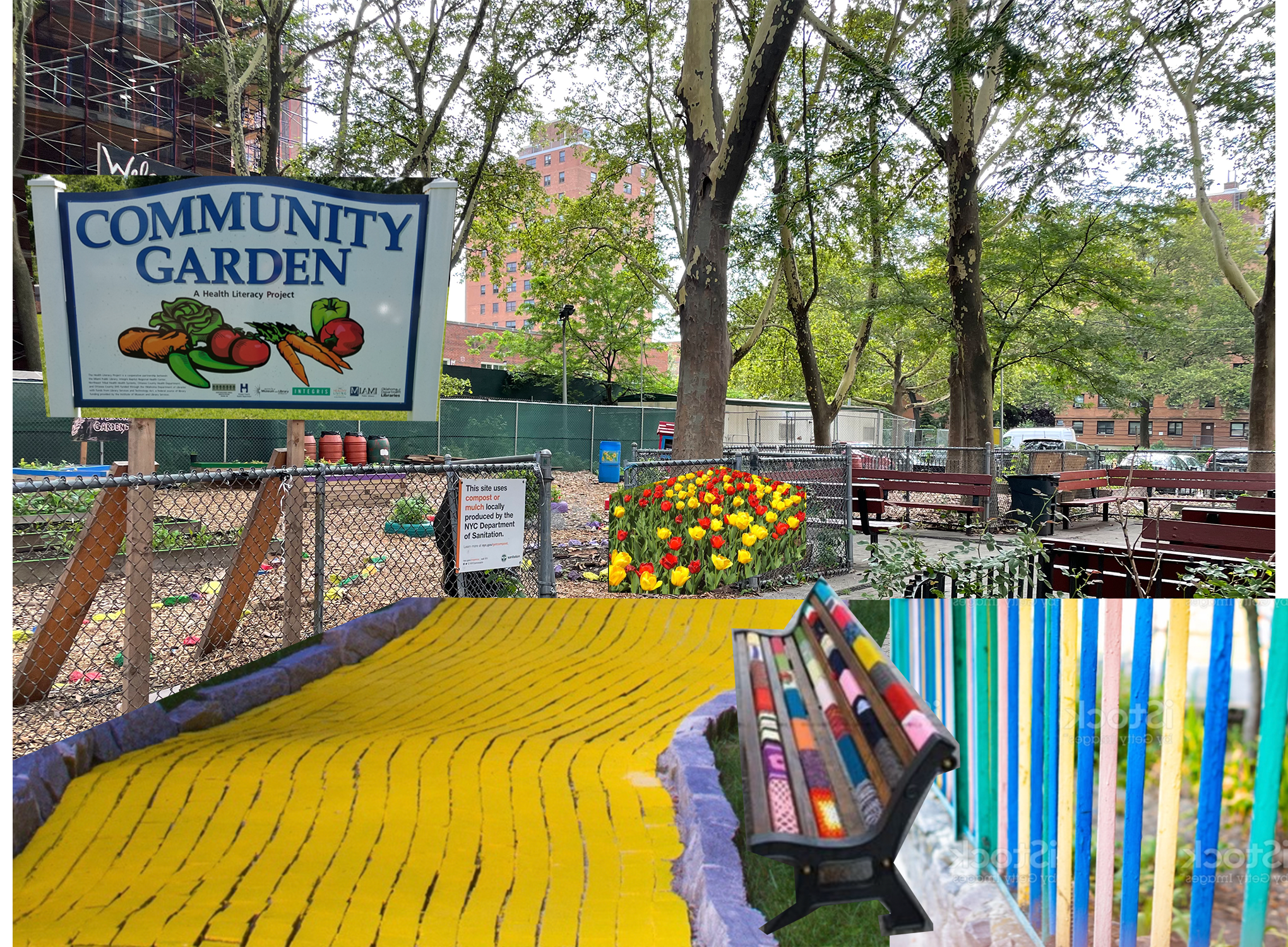
Would you like to comment on this article? Send your thoughts to: [email protected]
Related
Viewpoints
Archtober Invites You to Trace the Future of Architecture
Archtober 2024: Tracing the Future, taking place October 1–30 in New York City, aims to create a roadmap for how our living spaces will evolve.
Projects
Kengo Kuma Designs a Sculptural Addition to Lisbon’s Centro de Arte Moderna
The swooping tile- and timber-clad portico draws visitors into the newly renovated art museum.
Products
These Biobased Products Point to a Regenerative Future
Discover seven products that represent a new wave of bio-derived offerings for interior design and architecture.



